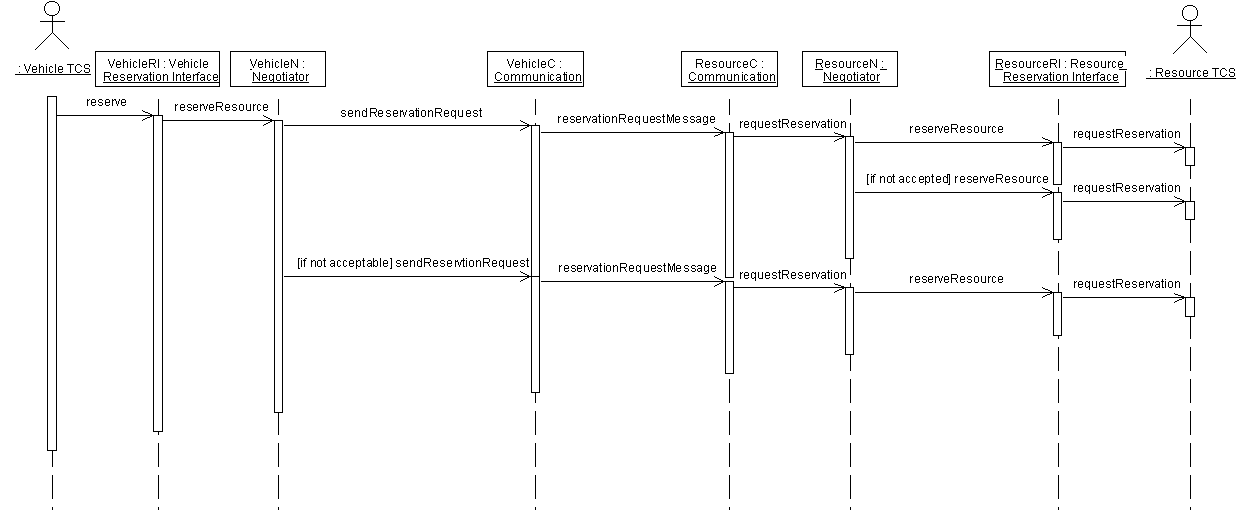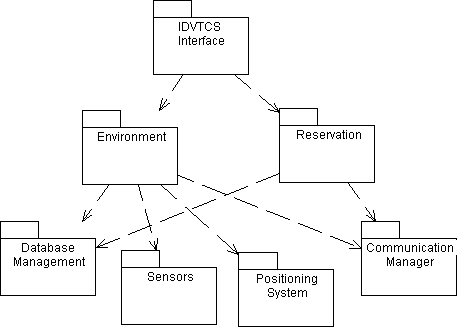
This is one (of many) solutions to the second assignment. The solution does not include the task network. It also does not trace all of the components back to the Use Cases, Use Case Scenarios and Requirements as required by the Assignment. This solution is the one that will be used in the third assignment.
The substems were initially chosen to conform to a closed system architecture in three layers.

| Subsystem | Description | Services Provided |
|---|---|---|
| IDVTCS Interface | Interface between the application level and the IDVTCS |
|
| Environment | Manages information about the vehicle and its local environment. |
|
| Reservation | Negotiates reservations for resources |
|
| Database Management | Local database management system |
|
| Sensors | Devices and system for tracking objects in the local environment |
|
| Positioning System | Device and system for determining vehicle position |
|
| Communication Manager | Device and system for communicating with other IDVTCS nodes |
|
| Subsystem | Use Cases |
|---|---|
| IDVTCS Interface | All |
| Environment | Request Information, Sense and Locate |
| Reservation | Negotiate |
| Database Management | Request Information, Sense and Locate |
| Sensors | Sense |
| Positioning System | Locate |
| Communication Manager | Request Information and Negotiate |
The following are the classes. These are analysis classes not design classes. The classes were not placed in subsystems and no associations are shown.
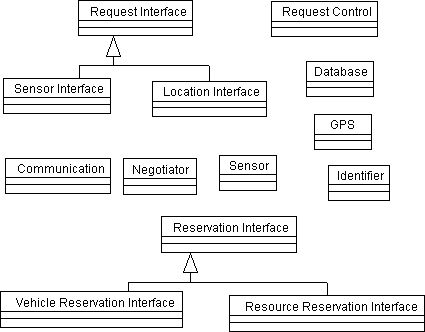
The following are the sequence diagrams. Each sequence diagram arises from a use case.

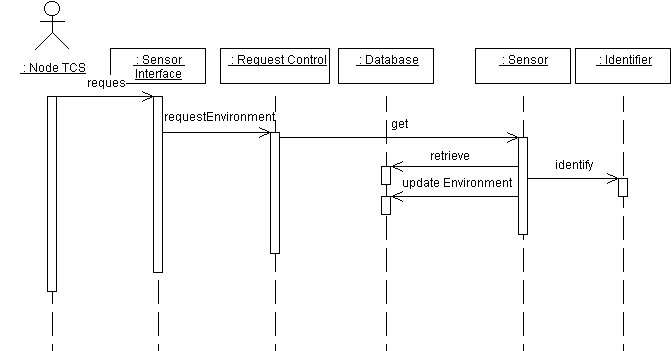
The first sequence diagram illustrates a request for locally available information. The second illustrates a request for information that is not available locally.
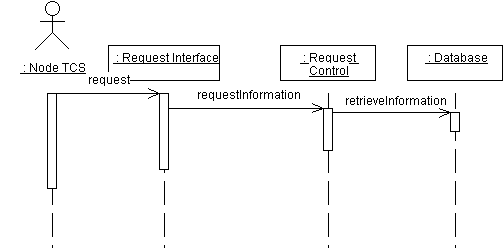
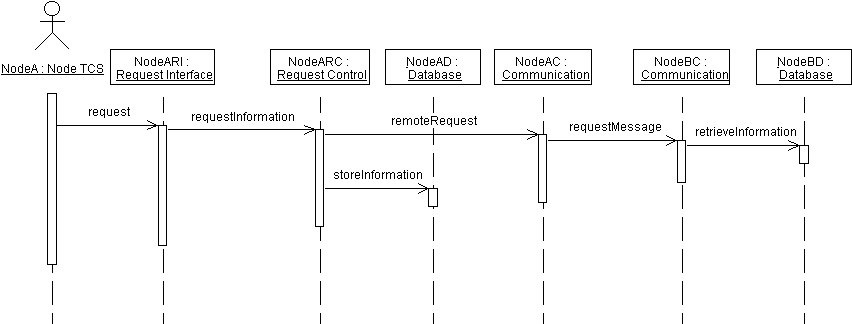
This is one example of many that could be given here. In this sequence diagram, a second request can be made by the Negotiator of either the Resource IDVTCS or the Vehicle IDVTCS.
